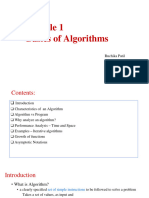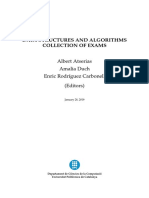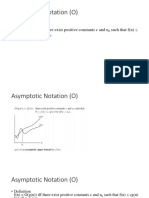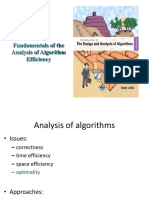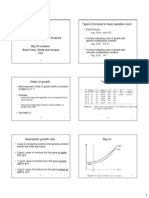0% found this document useful (0 votes)
11 views26 pagesAlgorithm Performance Analysis
The document provides an introduction to algorithms, emphasizing their role as a set of rules for problem-solving and their independence from programming languages. It discusses algorithm design, efficiency analysis (A Priori and A Posteriori), and complexity in terms of time and space, along with asymptotic analysis and notations (Big O, Big Omega, Big Theta) to evaluate performance. Additionally, it covers worst, average, and best-case scenarios for algorithm analysis using examples like linear search.
Uploaded by
topsgame2006Copyright
© © All Rights Reserved
We take content rights seriously. If you suspect this is your content, claim it here.
Available Formats
Download as PPTX, PDF, TXT or read online on Scribd
0% found this document useful (0 votes)
11 views26 pagesAlgorithm Performance Analysis
The document provides an introduction to algorithms, emphasizing their role as a set of rules for problem-solving and their independence from programming languages. It discusses algorithm design, efficiency analysis (A Priori and A Posteriori), and complexity in terms of time and space, along with asymptotic analysis and notations (Big O, Big Omega, Big Theta) to evaluate performance. Additionally, it covers worst, average, and best-case scenarios for algorithm analysis using examples like linear search.
Uploaded by
topsgame2006Copyright
© © All Rights Reserved
We take content rights seriously. If you suspect this is your content, claim it here.
Available Formats
Download as PPTX, PDF, TXT or read online on Scribd
/ 26






